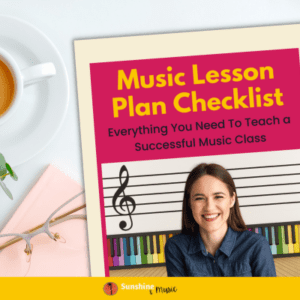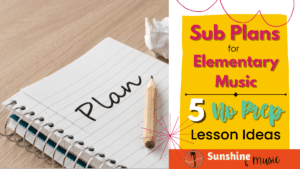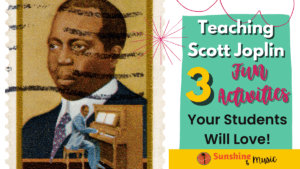What IS the PMMA?
When I was finishing up my PMMA testing (Primary Measures of Music Audiation) for the year, I had several music teachers ask me what the PMMA test is. The short answer is: It’s a test to determine the music aptitude of students grades K-3. What is music aptitude? It is the musical potential of a student. Music aptitude is actually spread across the human population on a bell curve!
How Does the Test Work?
This test is designed so that even your struggling readers can be successful. After all, we are trying to measure MUSICAL ability, not test-taking or reading ability. You can buy the test in a kit.
It will have a script you can read to administer the test, the worksheets you will hand out, the CD, the scoring sheets, and the booklet on how to interpret the scores. The test itself is all about listening to musical examples (little music patterns 3-5 notes long, and comparing them with a second pattern to decide if the two are the same or different). Then they circle their answer. Again, look how they created it so that even non-readers can succeed. There is a picture of two same faces on top (for if the patterns are the same) and a picture of two different faces on the bottom (for if the two patterns are different). There are even some practice examples at the beginning that the class goes through to make sure students understand the concept.
If you are more blessed than I and can gain access to a computer lab to do your testing, there is even a computer-based version of the test. It evens grades it for you and tells you what percentile your student scored in! (Someday I REALLY ned to find a way to make that happen!). I should also mention that there are two parts to the test – a tonal aptitude portion and a rhythm aptitude portion. I usually do one per music class and have a little time left over for a music activity after the test.
What Do I Do With the Results?
The booklet given to you will tell you based on your score, what percentile your student fits into. It is based per grade level. So a score of 30 might be consider high for a kindergartener, but low for a third grader.
One of the ideas of Music Learning Theory is to differentiate instruction based on students’ ability levels. Once you know who your highest and lowest students are, you can tailor your instruction toward them. In Music Learning Theory, one of the main ways this happens is through Learning Sequence Activities. Check back next week to find out about LSAs and how they are useful in the classroom. Some of the other ways differentiated instruction might happen in your classroom might include: Lower students may need more scaffolding on activities, while your high aptitude students may be able to forge ahead with more difficult rhythms or answer higher level questions about the content.
You might THINK you know who your high level students are, but every year I think I’m only about halfway accurate in predicting who my highs and lows are (sometimes less accurate than that!). By providing students with musical content that challenges them while still allowing them to be successful, you are helping them to grow (think Vygotsky and his zone of proximal development, if you are a research nerd like me). Expand what they can do with help, and work on that skill, and you will expand what they are able to do by themselves! Musical growth! Hooray!
How We Can Affect Aptitude
Now – here is the big one (for me anyhow). Turns out that until age 9, children’s music aptitude (potential) is not stabilized. Up until that age, based on the level of music instruction they are getting, their musical potential can increase or decrease (no pressure, music teachers!). Before you go putting the weight of the world on your shoulders, realize that the MOST influential time to affect a child’s aptitude is before age 5. But then we have the students for 4 more formative years where we can help to boost that aptitude higher. Basically, the brain has a use it or lose it mentality. It assesses, okay, it it important for me to keep these neural pathways? (Think of Pixar’s Inside Out with the Memory Dump). If the child is getting lots of musical input, the brain says AH, guess this is important stuff and keeps those pathways in place (higher music aptitude). If the student is getting little musical input the brain says obviously this is not important and those pathways fade away (lower music aptitude). Whenever I think about that, it motivates me more than ever to give my students the best music education I possibly can (a constant struggle with all the different things demanded of us to be a “good” teacher – I always feel my teaching being pulled in a million different directions depending on the values of my principal, district, methodologies etc).
Next Steps
So to get started, you will need to purchase the test (I can be bought through GIA publications). It is an initial investment but continues to be valuable for the rest of your teaching career, so very worthwhile in my opinion. You will need to set aside about 30 minutes to test. This gives you time to get papers and pencils distributed and run through the explanation of the test to the students. You will also have to set aside a little time for grading the tests. Check back in next week, to see how to use Learning Sequence Activities (LSAs) to really differentiate your instruction based off the data you have collected (won’t your principals love THAT!).
Source for this article: Gordon Institute for Music Learning Theory. www.giml.org
Did you like this article? Check out these:








0 Responses